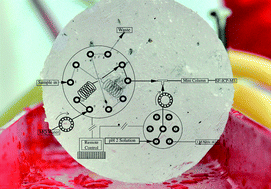Determination of Fe2+ and Fe3+ species by FIA-CRC-ICP-MS in Antarctic ice samples†
Abstract

Maintenance work is planned for Wednesday 1st May 2024 from 9:00am to 11:00am (BST).
During this time, the performance of our website may be affected - searches may run slowly and some pages may be temporarily unavailable. If this happens, please try refreshing your web browser or try waiting two to three minutes before trying again.
We apologise for any inconvenience this might cause and thank you for your patience.
* Corresponding authors
a Department of Earth Science, University of Siena, Via Laterina 8, Siena, Italy
b
Department of Environmental Sciences, Informatics and Statistics, University Ca' Foscari of Venice, Dorsoduro 2137, Venice, Italy
E-mail:
barbante@unive.it
Fax: +39 041 2348549
Tel: +39 041 2348942
c Centre for Ice and Climate, Niels Bohr Institute, Juliane Maries Vej 30, Copenhagen, Denmark
d Institute for the Dynamics of Environmental Processes-CNR, University of Venice, Dorsoduro 2137, Venice, Italy
e Accademia Nazionale dei Lincei, “Centro Beniamino Segre”, via della Lungara, Rome, Italy
f Laboratoire de Glaciologie et Géophysique de l'Environnement (UMR UJF/CNRS 5183), 54, rue Molière, Domaine Universitaire, B.P. 96, Saint Martin d’ Hères, France

 Please wait while we load your content...
Something went wrong. Try again?
Please wait while we load your content...
Something went wrong. Try again?
A. Spolaor, P. Vallelonga, J. Gabrieli, G. Cozzi, C. Boutron and C. Barbante, J. Anal. At. Spectrom., 2012, 27, 310 DOI: 10.1039/C1JA10276A
To request permission to reproduce material from this article, please go to the Copyright Clearance Center request page.
If you are an author contributing to an RSC publication, you do not need to request permission provided correct acknowledgement is given.
If you are the author of this article, you do not need to request permission to reproduce figures and diagrams provided correct acknowledgement is given. If you want to reproduce the whole article in a third-party publication (excluding your thesis/dissertation for which permission is not required) please go to the Copyright Clearance Center request page.
Read more about how to correctly acknowledge RSC content.
 Fetching data from CrossRef.
Fetching data from CrossRef.
This may take some time to load.
Loading related content
